Virtual Museum > Electronic Golden age > LED display
It will be difficult to create a new page about HP calculators, when there are already millions of them. And I don't want to copy/paste what somebody else did. I hate to see WEB site being copied from each others.
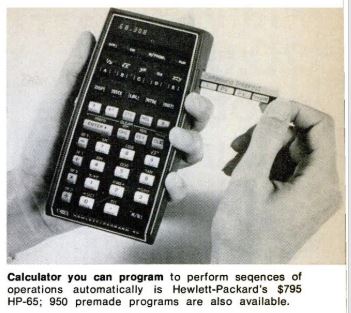

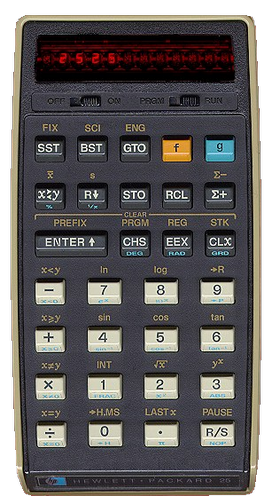
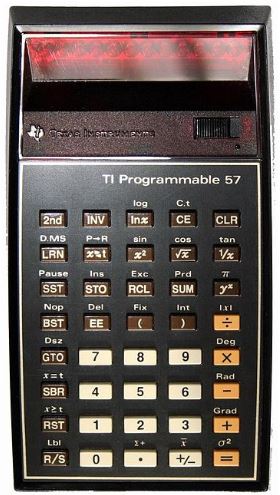
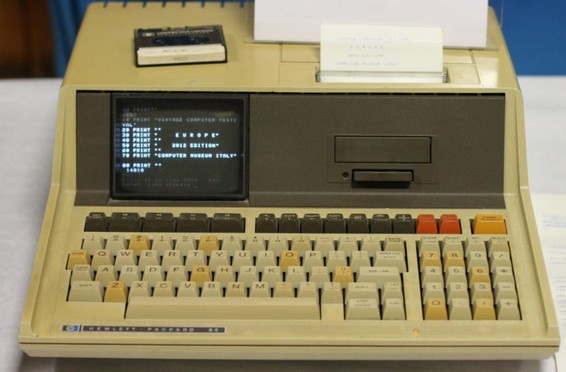
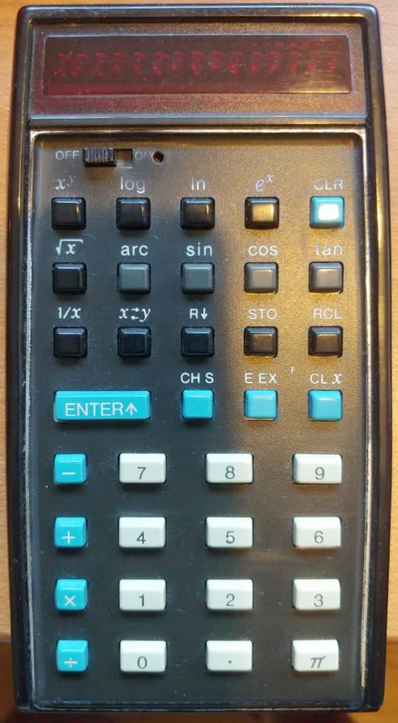
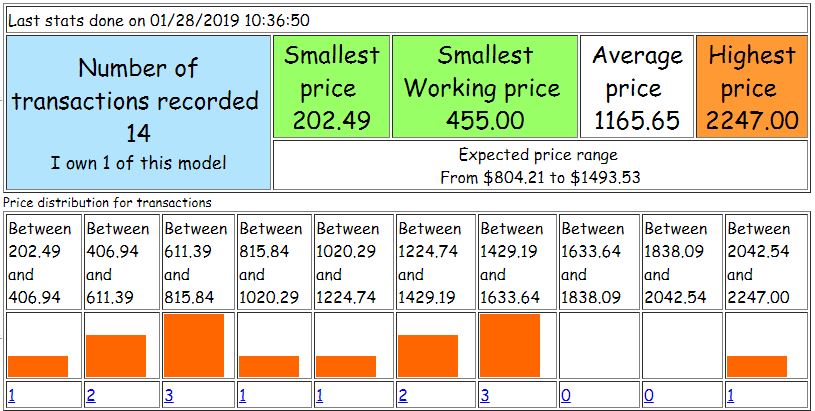
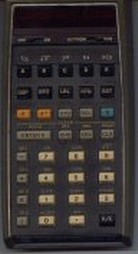
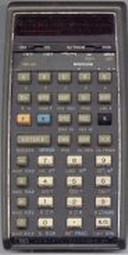

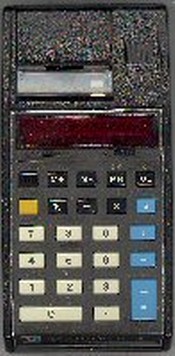
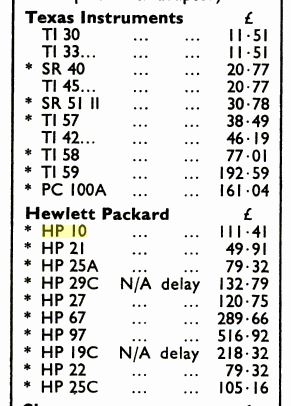
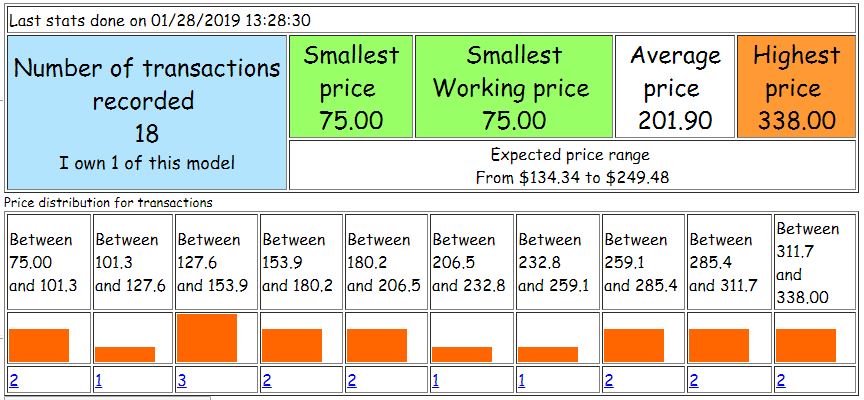

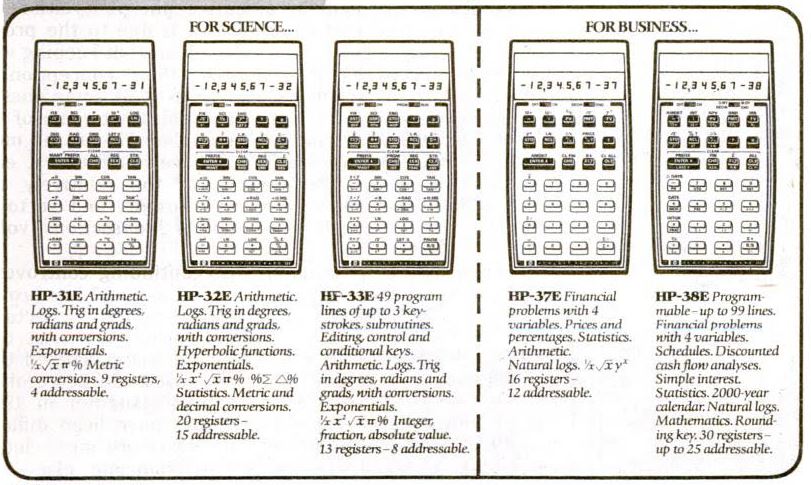
So I will simply talk about my own experience and the various models I acquired along the years:
1976: High school. One of our teachers had a calculator that you could program using small magnetic cards. I had no idea at that time of the brand or model. It was simply something out of a dream. We were all impressed by this machine and dreaming about having one, one day. I learned, several years later, that it was an HP-65. And of course, I had to get one of these. Here is an Ad in Popular Mechanics from 1974
1977: Fresh out of high school, where I was using small calculators like the commodore 7919, I started engineering school:
One of the older students was selling an HP-25. I never heard of this calculator before, but I was really impressed by the programming capability. I spent all my summer job salary on this. But it was really worth it. Even though we had only 50 steps of programming, I spent hours creating more programs and watching these LEDs blinking while the program was running.
At that time, we had 2 groups of students: the HP group, and the Texas-Instruments one (similar to the Apple-Android cell phones now). We spent hours comparing the HP-25 to the TI-57. Until one of the TI group member dropped his TI-57 from the table and it shattered on the ground. Being like I am, I told him my HP-25 would never do that. And even after a few drop tests, he admitted that it was in fact a stronger calculator. Small victories make your day :-)
Below are the HP-25 and the TI-57 next to each other. Similar buttons, similar functions, similar programming capabilities. Different quality, though. I realized years later that the keyboard on the HP was really good, as the keys still work after 40 years.

1982: I spent 2 years in Morroco because, at that time, we still had to do some army time, and I wasn't exactly the military type, so I found a different way of doing this. The HP-25 was still with me. I found a way to program it, and capture the flicker of the display, to couple this to a heater element, and have my coffee ready in the morning. All I had to do was count down from a specific number, and when the display stopped flickering the heater was turned ON.
1984: Started working for Hewlett-Packard Company. My first job was to repair HP-85. Next to me was the repair line of the HP-41C. Drawers full of spare parts. If I knew at that time, I would certainly have saved a few of those for later. I didn't know it at that time, but I was hooked. A couple decades later, I would start my collection.
The HP-85 shown above is a mini-computer with a CRT display. It runs BASIC and had an integrated printer, tape backup, and several I/O slots on the back where you could add Memory, HP-IB interfaces, etc. I have 2 in my collection that I need to clean and show in some videos. These were used by Field Service personnel to repair disk drives.
Fast forward until today, I do have a certain number of different models of HP calculators. Too much according to the wife. But I am proud of owning rare models such as the HP-10, Xpander, or HP-75C. I also got a good deal on a HP-01, still working fine.
I will show a few of those in separate pages of this Virtual Museum
But since this page is in the LED section, let's talk about a couple of LED models that I really like from HP:
HP-35
Even though I was working for HP, I wasn't really interested in calculators at that time. When I started looking and found that the HP-35 was an iconic model, I had to get one. I did get a few of those actually. But the one I like the most is the following:

This looks like an ordinary HP-35 (if there is such thing..) but the main difference is the small opening next to the ON/OFF switch, where a small red led indicates when the power is ON. This was one of the first models of the HP-35, called accurately "Red dot". HP realized quickly that this LED was redundant with the display, and was simply drawing current from the batteries, when the user could realize the machine was ON simply by looking at the display.
These Red-dot machines are really thought after, and the prices show this:
Note: I checked the first 3 transactions (lowest prices), and all of them were "non working".
HP-65 HP-67 HP-97
These were my dream since high-school. I got a couple of them, and even spent some time fixing the gummy wheel for the magnetic card reader. I will get better pictures soon:



These machines were very powerful and had the ability to save the program on a magnetic card. I know how useful it must have been because after using an HP-25 for several years, I felt the pain of re-entering the program every time you switched off this HP-25, even if it was only 50 steps. The HP-67 and 97 had a 224 steps program, but each step was able to store multiple keystrokes, such as the F or G key. The HP-25 used one step for each key.
They were produced between 1974 (HP-65) to 1982 and of course were using the RPN method to enter numbers and operators.
HP-10
not to be confused with the later HP-10B or HP-10BII. This is the original HP-10, with LED, and an integrated printer. I need to get also a better picture.

Although it's a little bigger than the other pocket calculators such as the HP-35 or HP-25, this was a nice integration of calculator and printer, at a time where components were still bigger than what we have today. There were not too many functions available, so it was mainly a basic calculator. But the price was quite big, compared to other calculators. Here is an example from 1978, it's in British Pounds but the rate of the pound was about 1.9 at that time:
That would give about $200 for an HP-10 (basic 4 operations) compared to $160 for an HP25 with all scientific function and programming capabilities. Note also that the TI-57 that I mentionned earlier was half the price of the HP-25.
Not surprising that they didn't sell too many of these HP-10 machines. And this is why they are quite rare today and not cheap. Here is an overview of the prices you would expect to pay:
HP-38C HP-38E ( and HP-31E, HP-32E, HP-33E, HP-37E, HP-33C )
I would never have bought these calculators (the 38E and 38C) if it wasn't for my collection: I am not a financial guy. Talk about technology, OK, but as soon as we start talking about finance, I give up. However the HP-38E was some sort of high-end calculator in the finance world in 1978. From an ad in Popular Science of June 1978, we have an idea of the prices:
Note the price of $110 for an HP-38E. An HP-67 would cost you $360 !! To better understand what was happening in 1978, here are a few facts:
Dow jones : between 870-893
Median household income: $15000
average monthly rent : $260 ---> This is less than the price of an HP-67
Gallon of gas : $0.63
And if you are a little lost about all these HP models, here is another ad in a British magazine showing the available models in 1978
The model HP-38C was introduced a year later, and as you may have guessed, the C was for "Continuous memory", meaning you could turn the machine OFF and still keep your program. Here are the machines that I have, and again, I will add better pictures soon:
HP-31E | HP-32E | HP-33E | HP-37E | HP-38E |
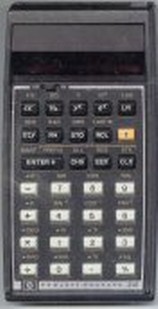 | 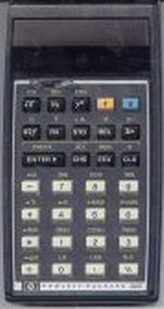 | 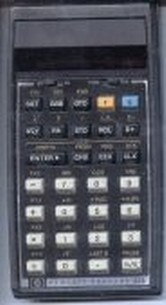 | 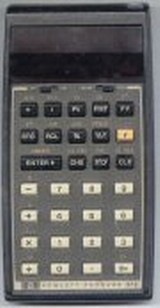 | 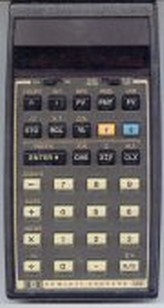 |
HP-33C | HP-38C | |||
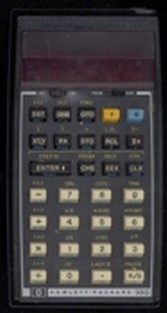 |  |
There were a few other models such as the HP-22, HP-25C, etc. I will present them later if I can find some time to finish this web site.
This page has been seen
times since January 2019
